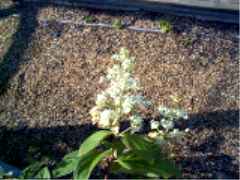 |
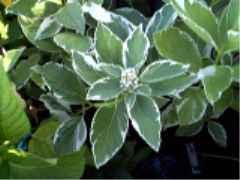 |
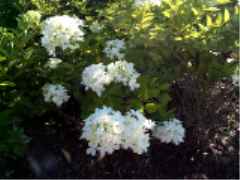 |
|
|
|
|
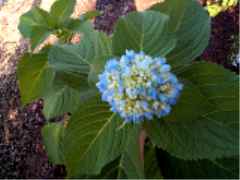 |
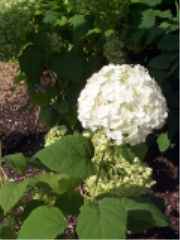 |
 |
|
|
|
|
Download time 30 seconds, but worth the wait!
The Colorful World of Hydrangeas
 |
 |
 |
|
|
|
|
 |
 |
 |
|
|
|
|
A large group of summer blooming shrubs are the Hydrangeas. Many woody ornamental shrubs bloom in the spring, often leaving us with a great void of color except for the lower growing plants. Most of the more popular ornamental flowering trees have done their thing, as well as comparable sized shrubs such as forsythia, Korean spice bush (Viburnum carlissi), lilacs, and so forth. We are not limited to just hydrangeas, but they do offer a wide array of shapes, sizes, and colors for July bloom.
The most commonly known of the hydrangeas is the Hydrangea macrophylla "Nikko Blue" which has large medium blue flowers borne freely on old wood (last year's growth). "Nikko Blue" and "Annabelle", which has hugh white blooms, are Hydrangea macrophyllas referred to as "Hortensia". Like most hydrangeas, these plants like partial shade and a moist soil. The intensity of the blue hydrangea's color can be enhanced by lowering the pH with a handful of Iron Sulfate around the base of the plant. Likewise, the blue bloom can be made pink by applying lime around the base to raise the pH. These plants are deciduous and should not be pruned until the stems have leafed out in the spring. Then you should remove the dead stems and leave the rest, as they bloom on previous season's growth.
Another group of Hydrangea macrophyllas are the "Lacecaps" which have fascinating blossoms. The edge of the bloom has open petals much like those of the Hortensias, while the center tends to hold a tight, colorful "seed head" appearance. Throw in the fact that these plants come in many vivid colors, and you have a real show. "Blue Bird" is just that - a deep but electrifying blue. "Lemon Wave" is a gorgeous light chiffon yellow, and "Pia" is a low growing plant with a deep pink bloom. The is also a variegated Lacecap know as "Variegata" which sports white flowers as well as green and white variegated leaves.
The Hydrangea paniculata "Grandiflora" , or "P.G. Hydrangea" is the old fashioned "snowball bush", a name which is often used to describe just about anything with a large round bloom. If you are looking for a "snowball bush" do your homework so you'll know which you are seeking. The plant is much woodier than the soft stemmed Macrophyllas, looking more like a shrub than a large perennial. The plant is commonly presented in a tree form, usually 4 to 6 feet tall. The single stemmed tree gives a great show when the dogwoods and cherries have long since stopped blooming. Hydrangea paniculata tardiva bears a white bloom on a long spire, unlike it cousins, which tend to display rounded blossoms.
Hydrangea quercifolia is the Oak Leafed Hydrangea. This plant is also woody and is one of the more sun tolerant of the Hydrangeas. The leaf has a similar shape to a pin oak, thus the name. This plant also has a white bloom in the summer. Its unique leaf form and interesting bark make it a welcome member of the landscape.
I have presented the tip of the iceberg by discussing Hydrangeas. They possess many more characteristics which I have not mentioned. The point is that this group of plants really deserves consideration and study when planning your garden. Until next week.
Andy Lynn